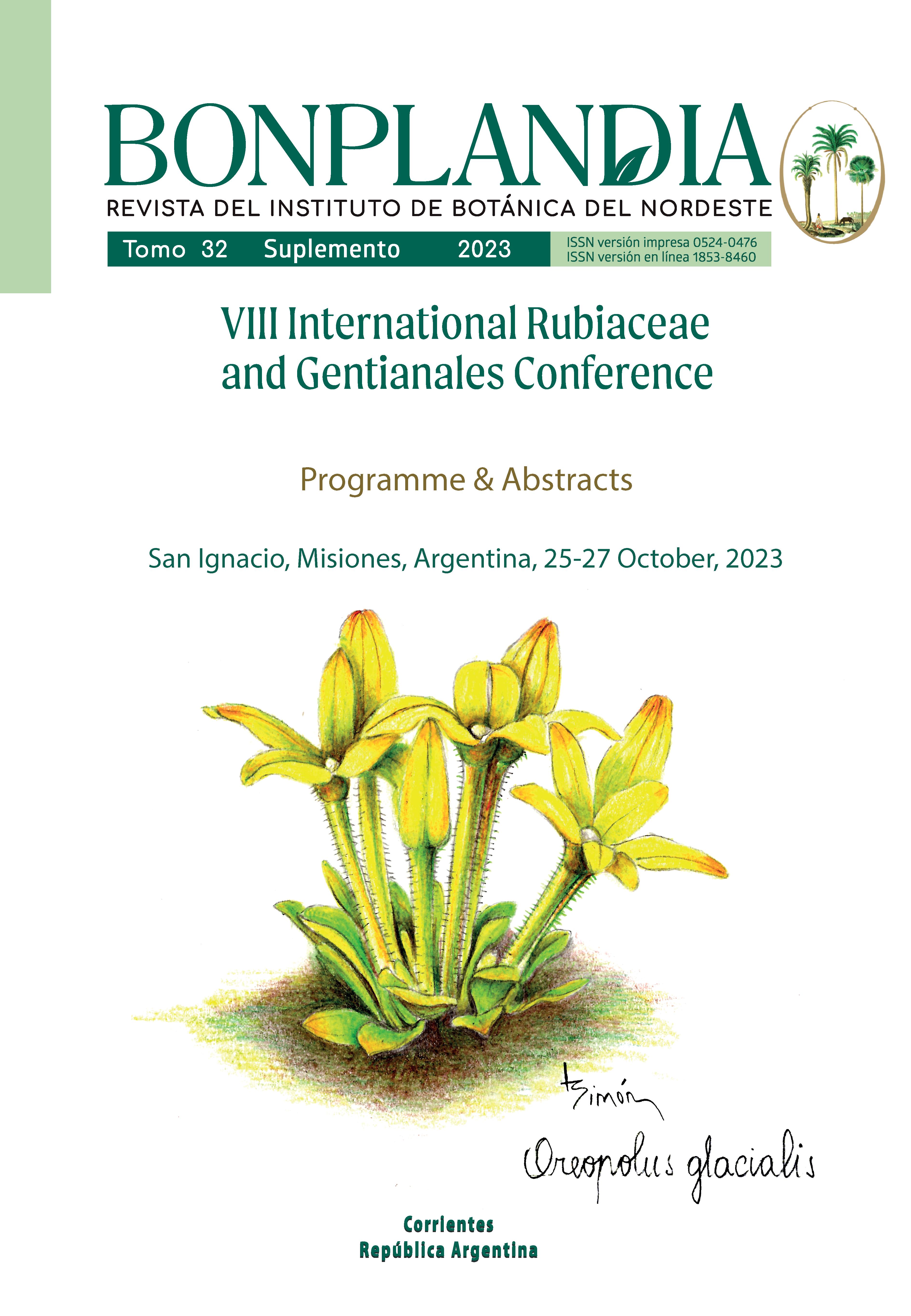There and back again: molecular phylogenetics of the Brazilian endemic Psyllocarpus (Rubiaceae: Spermacoceae) supports a circumscription of the genus based on its original concept
Abstract
The Spermacoce clade (tribe Spermacoceae) is one of the most taxonomically complex groups in Rubiaceae due to the unclear delimitation of Borreria and Spermacoce, in which several smaller genera are phylogenetically intermingled. One of these genera is the Brazilian endemic Psyllocarpus, whose circumscription was broadened, thereby including two sections. Psyllocarpus sect. Psyllocarpus, being based on the original genus delineation, includes nine species, distributed in the Cerrado and campo rupestre of eastern Brazil, whereas P. sect. Amazonica comprises three species, occurring in the Amazonian campinas. Furthermore, P. intermedius was not classified in any of these sections when it was later described. In order to test the monophyly of Psyllocarpus and assess its relationships to other genera, we conducted phylogenetic analyses, sampling across the whole Spermacoce clade, including nearly all Psyllocarpus species. A combined nuclear ribosomal (ETS and ITS) and plastid (rps16 and trnLtrnF) dataset was generated, representing 124 species (ca 25% of the species in the clade) in 15 genera (ca 65%). Various methodologies were applied to investigate the degree of incongruence among markers and address the lack of resolution and low support values for some branches. Our results revealed that Psyllocarpus is not monophyletic. Psyllocarpus campinorum (from P . sect. Amazonica) and P intermedius are situated as distinct lineages in the Spermacoce clade, yet do not belong to Psyllocarpus. Members of section Psyllocarpus form a strongly supported clade sister to Staelia and was recovered with high to maximum support across different datasets and inference methods. Therefore, Psyllocarpus has to be circumscribed based on its original concept, excluding P. sect. Amazonica and P. intermedius. This establishes the genus as a monophyletic and easily diagnosable taxon, characterized by terete leaves, homostylous flowers, a bilobate calyx, included stamens and style, and compressed, septifragally dehiscent capsules with a persistent septum.Downloads
Download data is not yet available.
Downloads
Published
2023-10-26
How to Cite
Carmo, J. A. M., Reginato, M., Sobrado, S. V., Miguel, L. M., Janssens, S. B., Dessein, S., Salas, R. M., & Simoes, A. O. (2023). There and back again: molecular phylogenetics of the Brazilian endemic Psyllocarpus (Rubiaceae: Spermacoceae) supports a circumscription of the genus based on its original concept. Bonplandia, 32, 5. Retrieved from https://revistas.unne.edu.ar/index.php/bon/article/view/6942
Issue
Section
Presentations
License
Copyright (c) 2023 Bonplandia

This work is licensed under a Creative Commons Attribution 4.0 International License.
Declaration of Adhesion to Open Access
- All contents of Bonplandia journal are available online, open to all and for free, before they are printed.
Copyright Notice
- Bonplandia magazine allows authors to retain their copyright without restrictions.
- The journal is under a Creative Commons Attribution 4.0 International license.











.jpg)


